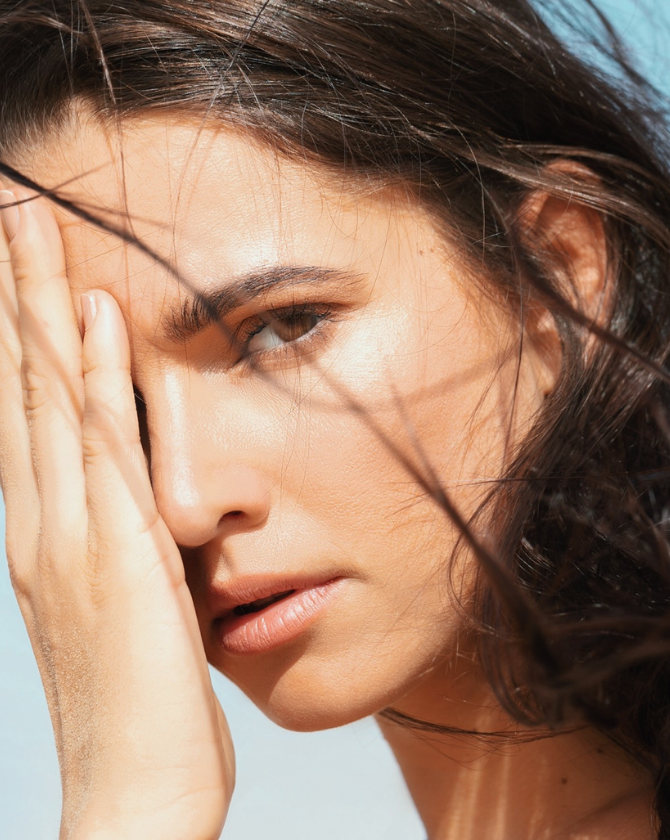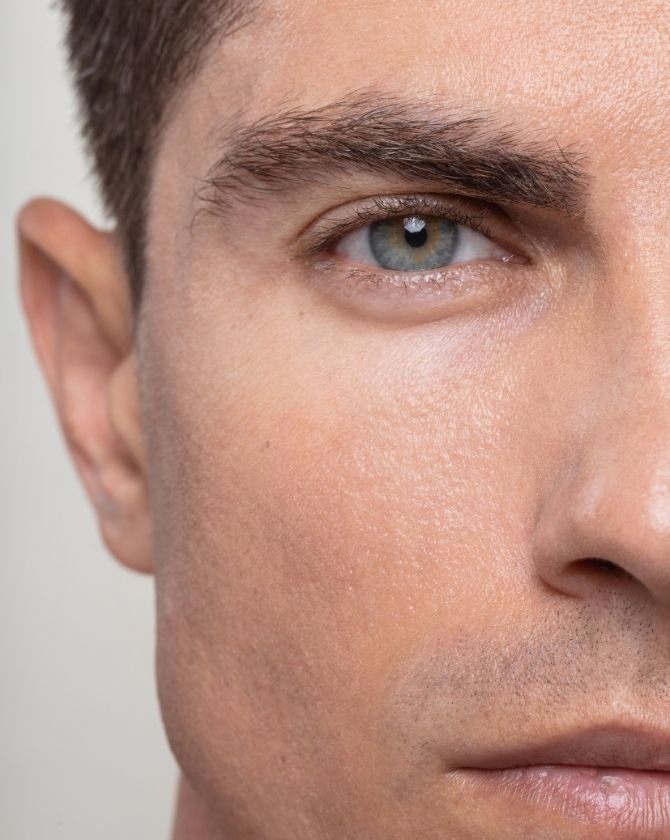

There are several medical terms for drooping eyelids: ptosis, palpebral ptosis, eyelid ptosis or blepharoptosis. This is a drooping of the upper eyelid, with a very pronounced palpebral crease, sometimes falling onto the ciliary margin, giving the eyes an impression of heaviness. Severe drooping of the eyelid can lead to loss of visual field, reading difficulties and overall discomfort. Ptosis can affect one or both eyes, and its disfigurement can be a source of discomfort.

Most often, drooping eyelids are linked to the natural aging of the skin, as the lift muscle loses tone over time.
Other factors can also cause skin dehydration, such as stress, poor lifestyle habits (alcohol consumption, smoking...), inadequate skincare routine...

This type of sagging can be observed in the elderly, and is a classic relaxation of the levator muscle.
Ptosis is often associated with a history of cardiovascular risk, sympathetic nerve lesions (Claude Bernard Horner syndrome) or oculomotor lesions: the combination of ptosis, miosis (pupil retraction) and anhidrosis (absence of sweat secretion).
Congenital ptosis: from birth, a dystrophy of the levator muscle of the upper eyelid is observed, which alters the muscle.
Myasthenia: a neuromuscular disease that causes muscle weakness.
Ocular myopathies: a neuromuscular disease that causes eye problems.
Steinert's myotonic dystrophy: This is a rare genetic disease that causes muscle weakness, with muscles struggling to relax at the end of contraction.
This is a dysfunction of the muscles that can no longer lift an eyelid that has become too heavy (enophthalmos, dermatochalasis, hypotropia...).
The levator muscle can also become disinserted following certain traumas.

This is a non-surgical medical blepharoplasty treatment. The use of an electric handpiece on the eyelid causes "tissue sublimation", i.e. instantaneous retraction of the skin, as excess skin changes from a solid to a gaseous state. This smoothes excess skin and gives the eyes an "almond-shaped" effect.
A protocol of 3 to 4 30-minute sessions spaced at least one month apart is recommended to preserve eyelid rejuvenation.
This is a firming treatment using HIFU (high-intense focused ultrasound), which acts on the SMAS (musculoaponeurotic system) to energize muscles and boost collagen production. These powerful pulses also act on fat cells to improve tissue tension, particularly around the eyelids.
Absorbable tensor threads are inserted under the skin to restore tissue tension. Based on a molecule that activates skin rejuvenation, they are a medical alternative to facelifts. Placed at the temples, absorbable tensor threads lift the eyebrow tails, open up the eyes and combat drooping eyelids. In addition to tightening the skin, tensor threads have a firming effect because they are colonized by collagen as they are absorbed.
Injected in micro-doses, botulinum toxin relaxes the muscles responsible for wrinkles, particularly in the crow's feet area, with a rejuvenating effect. Delivered to the eyebrows, Botox® lifts and opens the eyes. This is the "Brow Lift" technique.
One session smoothes wrinkles, and should be repeated every 4 to 6 months to maintain the effect.

For a rejuvenating effect on the eyes, select your needs according to your aesthetic expectations:
